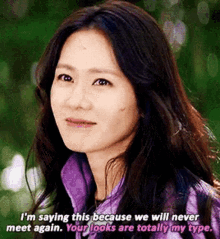In a major step toward inclusive play, Barbie has introduced its first-ever doll with Type 1 diabetes.
More than just a doll, this new release reflects the lived realities of millions of children worldwide and helps normalize medical conditions often overlooked in toys.
Created in collaboration with Breakthrough T1D, a global type 1 diabetes research and advocacy organization, this addition to the Barbie Fashionistas line opens the door for greater empathy, education, and representation.
1. Representation and Empowerment
For the first time, children with Type 1 Diabetes (T1D) can literally see themselves in a Barbie doll. This reinforces self-worth, helps normalize medical equipment, and shows that health differences don’t define what it means to be beautiful or bold.
“Introducing a Barbie doll with type 1 diabetes marks an important step in our commitment to inclusivity and representation,” Krista Berger, Senior Vice President of Barbie and Global Head of Dolls, said in a statement via Mattel. “Barbie helps shape children’s early perceptions of the world, and by reflecting medical conditions like T1D, we ensure more kids can see themselves in the stories they imagine and the dolls they love.”
2. Fostering Empathy in All Kids
When kids play with dolls that reflect different life experiences, they learn to understand and accept others.
Whether they live with T1D or not, children gain a greater appreciation for what others go through, laying the groundwork for empathy and inclusion at a young age.
3. Barbie's Influence Is Massive
With millions of dolls sold globally each year, Barbie has the power to shape how children view the world and themselves.
This T1D Barbie shows that health conditions like diabetes deserve visibility, not stigma.
4. Medical Gear Is Finally Being Normalized
From a CGM (continuous glucose monitor) to an insulin pump and even Barbie-pink medical tape, this doll incorporates real, life-saving devices into her design.
For children who use similar gear, this feels validating. For others, this can be educational and awareness-raising.
5. Backed by Real Experts
Mattel worked closely with Breakthrough T1D (formerly JDRF) to ensure the doll is medically accurate and respectfully designed. This collaboration gives the doll authenticity and honors the lived experiences of millions living with the condition.
“We were thrilled when Barbie approached us to collaborate on the development of the Barbie doll with type 1 diabetes,” Aaron J. Kowalski, Ph.D., CEO of Breakthrough T1D, said in a statement via Mattel. “I have lived with T1D since I was 13, and my brother since he was 3, so this partnership is deeply personal – it means the world to be part of bringing greater visibility to a condition that affects so many families."
6. Breaking the Silence Around a Misunderstood Condition
Despite affecting nearly 9 million people worldwide, Type 1 Diabetes is still widely misunderstood. Many people confuse it with Type 2, or think it’s caused by diet.
This Barbie helps correct those myths by sparking conversations and curiosity among kids and adults alike.
7. Supporting Global Advocacy
To mark the launch, Barbie donated dolls to kids participating in the Breakthrough T1D Children’s Congress, a global event that brings children with T1D to Washington, DC, to advocate for research and legislative support.
With this advocacy event, Mattel shows that representation goes hand-in-hand with activism.
8. A Bigger Diversity Push
Barbie now offers over 175+ looks across a spectrum of skin tones, body types, disabilities, and health conditions, including dolls with Down syndrome, hearing aids, vitiligo, and prosthetic limbs.
The T1D Barbie continues this movement toward inclusive play.
9. Honoring Real-Life Role Models
Peloton instructor Robin Arzón and model Lila Moss, both of whom live with T1D, received their own one-of-a-kind Barbie dolls to honor their advocacy work.
“After being diagnosed with type 1 diabetes a decade ago, I've found a lot of purpose in advocating for people with the condition and educating others about it because knowledge is power – especially for young minds.”
-Robin Arzón
"I am proud to use my platform to educate around type 1 diabetes and show that being different is cool. Receiving messages from people who see my patches and feel represented means everything to me."
-Lila Moss
10. It Sends a Powerful Message to the T1D Community: You’re Seen. You Matter.
For many children (and even adults), having a doll that mirrors their experience with diabetes is deeply emotional. This empowering doll tells kids that they are not alone and that they deserve to be celebrated.









